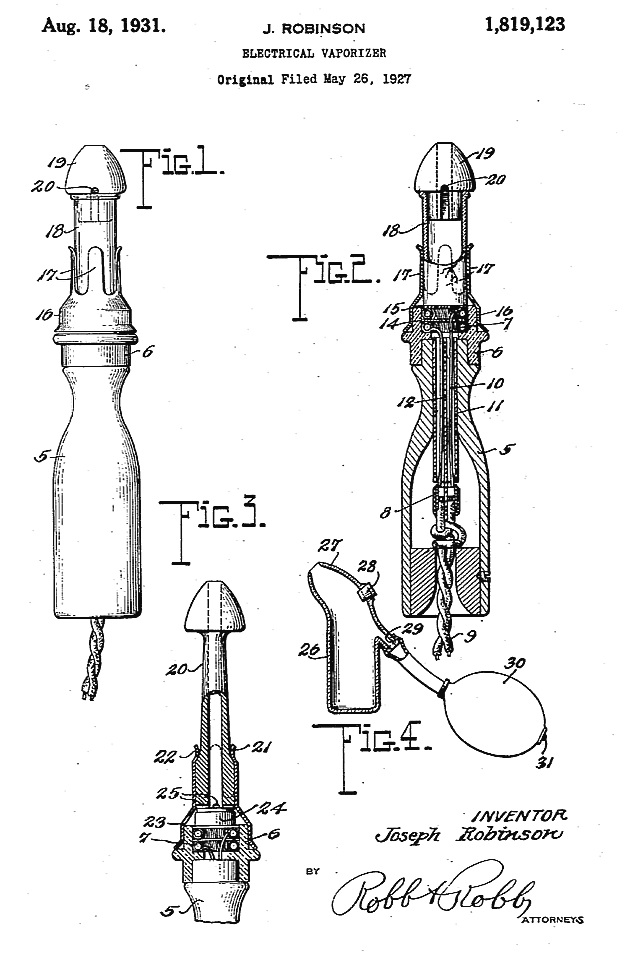The E-cig industry has managed in a very short period to gain the trust of the smokers around the world and to offer them a less harmful alternative to traditional cigarettes. Its resemblance compared tot the traditional cigarette, its lower cost and its technological advancement can set it apart amongst the rest of the nicotine replacement therapy products. Like all innovative products it took quite a few years for the E-cig to end up in the shape and form we all are accustomed to.
Here is a brief journey on its history:

1927
Joseph Robinson files a patent of the first device that resembles a modern e-cigarette.(Robinson, 1927)
1930
Joseph Robinson’s patent gets granted, but it was never commercialized.USPTO (United States Patent And Trademark Office)
1963 - 1965
Herbert A. Gilbert files his own patent in the state of Pennsylvania. It gets granted and publicly available by the United States Patent and Trademark Office.(Gilbert, 1965)
1965 – 2000
A number of new patents are issued for cigarette substitutes, including several novel electronic cigarette designs. In 1998, Philip Morris begins selling Accord, a battery-powered “heat not burn” device as a cigarette substitute.
2000 – 2004
Chinese pharmacist Hon Lik came up with the idea of using a piezoelectric ultrasound-emitting element to vaporize a pressurized jet of liquid containing nicotine diluted in propylene glycol. Hon Lik’s was granted in 2004 and became publicly available by the United States Patent And Trademark Office. (Lik, 2004).
2007 – 2009
Electronic cigarettes become available for sale and use in Europe and America.
2009 – Today
The E-cig global market continues to grow exponentially. Based on all statistics available it will manage to surpass the sales of traditional cigarettes around 2024.















